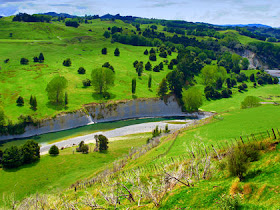My friend Richard Laster recently brought to my attention Barbara Lausche's
Weaving a Web of International Law (IUCN/ICEL, 2008, fully available online), a history of the International Union for the Conservation of Nature's Environmental Law Programme.

The book traces the program's origins back to pre-war Switzerland and the Netherlands, but things really picked up just after World War II, including efforts in the 1950s to advance a World Charter for Nature inspired by the Universal Declaration on the Rights of Man. The organization was influential in the creation of several environmental treaties, as well as in advancing domestic legislation around the world.
Though it aims only to tell the story of one organization, it seems to me the larger significance of the book in the historiographical landscape is that it shifts attention from both internal-doctrinal factors and (domestic) external-social/political/cultural ones that are usually marshaled to explain the evolution of environmental law, (back) to the realm of institutions and especially international experts, and their role in shaping environmental law across jurisdictions and on a global scale.















